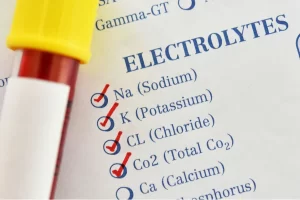Insulin and Potassium; 6 of The Best Foods To Eat
HOME | DIABETES EDUCATION | INSULIN AND POTASSIUM?
What Is the Connection Between Insulin and Potassium?
Could there be a link between Insulin and Potassium? Your body utilizes the insulin to assist move glucose into cells throughout your body. If you have diabetes, your body is not able to produce or utilize insulin effectively.
Type 1 diabetes isn’t avoidable, however you can avoid type 2 diabetes. Type 2 diabetes, or adult-onset diabetes, typically takes place in individuals ages 35 and older.
Potassium is an electrolyte and mineral that assists keep your physical fluids at the correct level. Your body can do the following if your fluids remain in check:
- agreement your muscles without discomfort
- keep your heart beating properly
- keep your brain operating at its greatest ability
If you do not preserve the best level of potassium, you can experience a range of sign that consist of basic muscle cramps to more severe conditions, such as seizures. According to current research study, there might be a link in between type 2 diabetes and low potassium levels.
What the research study states
Individuals acknowledge that insulin and potassium impacts diabetes, research study is continuous to identify why this might take place.
Scientists in one research study at Johns Hopkins University School of Medication connected low levels of potassium with high levels of insulin and glucose in individuals who were otherwise healthy. Low levels of potassium with high levels of insulin and glucose are both characteristics medical professionals connect with diabetes.
One 2011 research study discovered that individuals taking thiazides to deal with hypertension experienced a loss of electrolytes, such as potassium. Scientist kept in mind that this loss may increase an individual’s danger of establishing diabetes.
And in addition to that, scientists have actually likewise connected potassium levels to hypertension.
Despite the fact that low potassium might increase your threat of establishing diabetes, taking potassium will not treat your diabetes.

What triggers potassium levels to vary?
Usually, individuals ages 14 and over need to take in about 4,700 milligrams, or 4.7 grams, of potassium daily. Even if you’re getting as much potassium as you require, your levels might still end up being expensive or low.
This can take place for a variety of factors, consisting of a modification in your salt levels. When salt levels increase, potassium levels tend to decrease, and vice versa.
Other possibilities consist of:
- kidney issues
- an inappropriate blood pH
- altering hormonal agent levels
- regular urination
- throwing up
- taking particular medications, specifically cancer medications
Particular diabetes medications can impact your potassium levels. If you take insulin and potassium, and have not kept control of your diabetes, your potassium levels might dip.
What to anticipate at the medical professional’s workplace.
If you believe you’re at danger for diabetes, or that you might have a potassium shortage, make a visit with your physician. They can examine your case history and discuss your possible threat.
Your physician might see just how much potassium remains in your blood by doing a blood test. If the test reveals that your potassium levels are unusual, your physician might recommend a supplement or suggest particular dietary modifications to bring back the balance.

How to avoid your potassium levels from changing.
You ought to make every effort to take in 4.7 grams of potassium every day to keep your potassium in check. You can do this by monitoring your everyday consumption utilizing a food journal and actively looking into just how much potassium remains in the foods you consume.
A few of the very best sources of potassium are:
- baked potatoes, consisting of baked sweet potatoes
- plain yogurt
- kidney beans
- sun-dried tomatoes
- fruits, such as bananas, avocados, and peaches
- fish, such as salmon, tuna, and cod
You need to restrict your consumption of processed foods since they’re a bad source of potassium. If you exercise frequently and sweat a lot, think about including a post-workout banana shake to your regimen. This can renew a few of the potassium you lost and assist stabilize your body’s electrolyte levels.
If you feel as though you aren’t getting sufficient potassium, make a consultation with your physician. They can deal with you to establish the very best strategy.
With some tracking and advanced preparation in your diet plan, you can manage your potassium levels and assist avoid diabetes. It’s likewise valuable to learn more about what foods to prevent.
Generally, your body processes the food you consume and turns it into a sugar called glucose. Your body utilizes the insulin to assist move glucose into cells throughout your body. If you have diabetes, your body is not able to produce or utilize insulin effectively.
You must restrict your consumption of processed foods since they’re a bad source of potassium. This can renew some of the insulin and potassium you lost and assist stabilize your body’s electrolyte levels.



